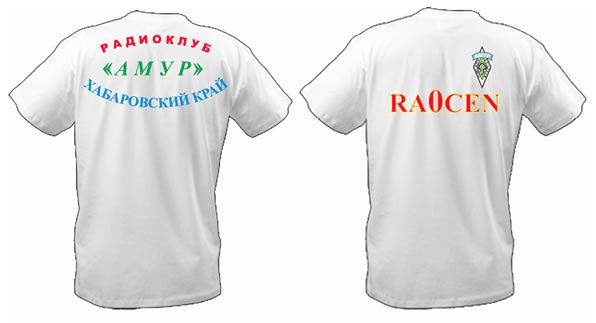INTRODUCTION
These rules are for the ARDF/Foxhunt competition at FRG-2011. The intent is for them to be similar enough to standard IARU international rules so that competitors do not have to remember anything special while they are on the course.
The event will be held on Sunday morning 14 August. Opportunity will be provided for participants to test their equipment with the transmitters beforehand. (Probably at the Friday party at Kuon and Dale’s house.)
TECHNICAL PARAMETERS
The hunt will be held on 2m only. The frequencies of the hidden transmitters and the finish beacon will be in the range of 144 — 146 MHz. The exact frequencies will be announced before the event. While we will try to pick quiet frequencies, interference from strong stations on nearby frequencies is possible. The frequency difference between the hidden transmitters and the finish beacon will be at least 400kHz. (If it looks like the finish beacon could cause interference to competitors when they start, we may choose to leave the finish beacon off until after the last competitor starts.)
The transmitters will use the standard MOE/MOI/MOS/MO5 identification and one minute transmit intervals. Each transmitter will send a callsign at the end of the transmission. Transmitter modulation will be FM with a continuous carrier (not keyed.) Competitors should have no problems hunting the signals using an AM receiver.
COMPETITION DESCRIPTION
Competitors will be divided into categories based on age and/or gender. We are currently planning to divide the categories at age 55, but we may adjust the categories based on the number of competitors in each.
Older competitors may choose to compete in the younger category. This decision must be communicated to the organizer at least 24 hours in advance of the event.
Competitors will start at the beginning of transmission from TX#1. No more than one competitor from each competition category will start at the same time.
Receivers may be impounded at the start. If so, competitors may pick them up 5 minutes before their start. Competitors may not turn on their receivers before they start on the course. If receivers are not impounded, competitors should make it obvious that they are not listening by leaving their headphones unplugged and off their ears.
The start times for all competitors will be posted near the start, along with a clock showing the official time. Competitors will be given their map and starting card approximately 5 minutes before their start.
The map will have the start and finish beacon locations pre-marked, including the exclusion zones. The exclusion zone distances may be somewhat shorter than international standards to accommodate the course, and will be announced in advance.
The starting line will be at the entrance to the starting corridor. After starting, competitors may not stop in the marked starting corridor to take bearings. The starting corridor will be at least 40m long and will be well marked.
Once out of the starting corridor, competitors may hunt for the transmitters in any order. Competitors in the older age category may find any 4 of the transmitters. (Finding the 5th transmitter will not improve their score.) All competitors (of either gender) in the younger age group will be scored on all 5 transmitters.
Each hidden transmitter will have a standard orange and white orienteering flag with the transmitter number on it. The flag should be visible from 5m away. Competitors need not find the transmitter, just the flag and marker. The marker (punch or pencil) will be attached to or near the flag. When competitors reach a transmitter they will use the marker to mark the appropriate box on their starting card. In case of problems or mistakes, marks in other locations will be accepted as long as the mark is clear to the scorer.
The time limit on the course will be 2 hours.
The finish beacon will be located at the entrance to the finish corridor, which will be the point marked on the map. There is no flag or marker at the finish beacon, and it does not count as a transmitter. Competitors must run inside the marked corridor from there to the finish line. A competitor’s finish time will be taken after they pass through the entire finish corridor in the correct direction and cross the finish line. After finishing a competitor shall hand their marked starting card to the scorer to verify the number of transmitters they found.
Competitors will be scored first on the number of transmitters found (up to the maximum for their age group) and secondly by elapsed time. Results will be posted in the finish area.
Competitors who do not find any transmitters, or who exceed the time limit, will not be scored.
Competitors may be disqualified for any of the following: receiving inappropriate help from any person using a GPS receiver for navigation violating any prohibited areas on the map failure to be courteous to other users of the park unsportsmanlike conduct.
AWARDS
Gold, silver and bronze individual medals will be awarded in each category. Competitors must be scored (that is they must have found at least one transmitter and finished within the time limit) to be eligible for an individual medal.
Unofficial or unattached competitors (those not part of a national team) are not eligible for individual or team medals.
Gold, silver and bronze team medals will be awarded for the overall foxhunt event. The overall score for each national team will be calculated as follows:
The relative score for each competitor will be computed by calculating the difference between their time and number of transmitters and that of the gold medal winner in their category. Only competitors who were scored will be included in this calculation. For example, if a competitor found 3 transmitters in 97 minutes and the gold medal winner in their category found 4 transmitters in 81 minutes, that competitor would have a relative score of 1 missed transmitter and 18 minutes behind first place. (In some cases, the time may be negative.) The top two relative scores on each national team will be added together to get the team score. A team must have at least two scored competitors to be considered for a team medal. The team with the lowest team score (considering number of transmitters first, then time) will be the team winner.
Team medals will be awarded to all members of the team who were scored.
JUDGING
Any problems or complaints need to be told to the Event Manager, who shall attempt to find a fair resolution, including modifying these rules as necessary. The Event Manager may appoint others to serve as a jury to resolve a specific question when appropriate



